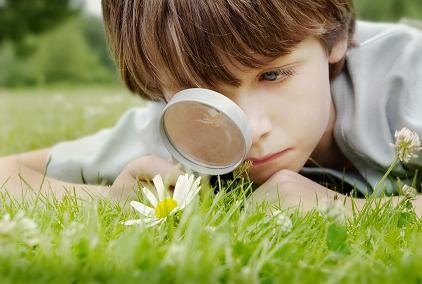Easy Steps to Science Fair Projects (Part I)
I’m working on a new sequence of science articles…
tell me what you think about the topic and content (is it any good?)
Thanks!
~Aurora
Easy Steps to Award-Winning Science Fair Projects (Part I)
(…first few paragraphs missing…)
Does this sound familiar?
KID: “I have to do a science fair project.”
PARENT: “Hmmm… what are you going to do?”
KID: (pause) “I dunno.”
PARENT: (eager to help) “What are you interested in?”
KID: (whining now) “I don’t know…”
PARENT: (getting annoyed): “Well, there must be something you’re interested in.”
KID: (still whining) “Like what?”
PARENT: (picking up a science textbook) “Well, how about one from here?”
KID: (rolling eyes): “Yeah, sure. Not.”
The trouble with picking up a textbook and doing a project listed is that they are usually finished projects – meaning that everyone knows not only the experiment but what’s going to happen. No scientist in their right mind would do a experiment if they knew the ending! You’ve got to take a different approach, but before we do, let’s take a quick look at common myths about science projects (namely, your personal expectations about one has to look like).
Your teacher just strode into class and announced that it’s nearly time for the Science Fair, and projects are due next week. You scope out the room and find Brian Brainiac inventing a new addition to the International Space Station… Corey Comet discovering a new species of octopus… and Darlene Dazzler built a transporter. Your head begins to spin like hamster wheel as you try to hit on the Ultimate Science Project that would make Einstein gape with awe.
The truth is, science fair projects don’t have to be glitzy, glamorous, or even work quite right… they just have to be yours. And they need to be science experiments, not jazzed-up science reports masquerading as projects. A science experiment is a simple question you want an answer to, such as:
“Do later bedtimes really make you sleep better?”
“Does eating high-sugar foods before bedtime make your dreams more vivid?”
“How many balloons will lift a kid into the air?”
“What kind of grass needs to be mowed the least?”
A science report are questions that don’t require any real testing on your part – all you have to do is research to get the answer. Topics like: What is acid rain? What is the sun made of? How does a power plant work? How does the human body work? Is overeating bad for you? We’ve seen reports win local school science fairs, but they don’t make it into the big time regional or national competition. And they aren’t nearly as much fun as doing your own experiment.
So, where do you start? Suppose you want to find out if listening to music during a test will help you get a better grade, and if so, which one works the best. You’ll need to first figure out which “thing” (variable) you’re going to change in your experiment to give you different results.
So first, you’ll need to take a test with no music, and record in your notebook the score you got, along with a few other things to help you figure out if it was really the music choice or not. Things like: the weather, your mood, when you woke up, the date, and how difficult the questions were.
A word of caution – don’t change more than one “thing” from one experiment to the next, or you won’t know which change is actually responsible for the new result.
Then you’ll need to test out as many bands as you possibly can, recording not only the stuff above, but also the beat, tone, melody, and how fast or slow the song was… and be sure you’re using the same kind of headphones, too, or that’s another variable you’ve got to keep track of (does sound quality matter?). Are you eating the same breakfast each morning, too? Do you shower each morning, or every other day? If this is starting to sound like it’s getting a little hard to track all the little differences and changes, well… welcome to science! Scientists spend years trying to sort everything out, track the changes and differences, and make sense of it all. You only have to do it for a week or two. And you can discard any variables you think don’t have a big effect on your results.
Can you imagine what kind of argument you could have at your fingertips if your hypothesis (“Beach Boys Leads to 12% Higher Test Scores”) was successful? Your classroom would never be the same.
Okay… that’s probably enough for now… I’ll leave some for Part II. Just let me know what you think.


